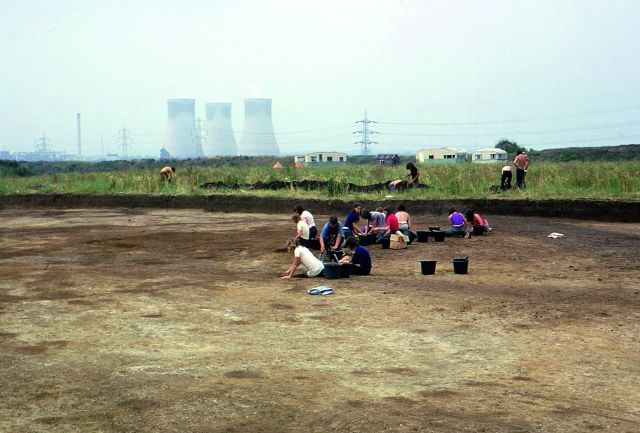
To celebrate we have launched this website to showcase our achievements over four decades of archaeology in this country and beyond. You will find stories and pictures from the directors and members of staff, and from clients, partners and the volunteers who have worked with us.
Each week we will be adding new material. Check out our major excavations, most exciting discoveries, key publications and the main events in our 40-year history!
 John Hinchliffe
John Hinchliffe
It was all Martin Biddle’s fault. The sterling efforts of his RESCUE organisation in the early 1970s secured substantial state funding for archaeological fieldwork – yes, state-funded archaeology, young folks, just think of that! As a result, a cash crop of new archaeological units began to spring up around the country and a motley crew of young diggers who were spending their time on excavations around the country whilst putting off the evil day when they had to find a proper job suddenly found themselves accidentally becoming the first generation of professional field archaeologists. The Oxford unit of course had a flying start, as it represented the amalgamation of a number of existing teams in Oxford and Abingdon and the Upper Thames Excavation Committee. Thankfully for me the staff of the new unit were already deeply involved in a number of current projects and thus it was as an itinerant jobbing archaeologist I found myself invited to take charge of the excavation of an area at Appleford, ahead of gravel extraction, where aerial photographs indicated the presence of a number of ditched enclosures.
Recruiting a number of familiar digging companions, supplemented by a team which included a bright young Reading student called Gill Hey (whatever happened to her, I wonder?), we spent the summer of 1973 excavating late Bronze Age, Iron Age and Romano-British features. Though not in itself exceptional the site formed one of a series of Oxford unit excavations which represented a pioneering study of the Upper Thames Valley and proved to be a model for landscape archaeology across the country. Our excavation and recording techniques were, no doubt, pretty rudimentary by modern standards. We completely failed to find anything of ritual significance (a concept at the time which provoked a great deal of pointing and laughing in the direction of anyone suggesting it), nor did we undertake any phenomenology – unless drinking dry the Swan at Sutton Courtenay counts (we thought it was pretty phenomenal). We did have fun though and, take the word of an aged digger, if it isn’t fun you’re not doing it right!!